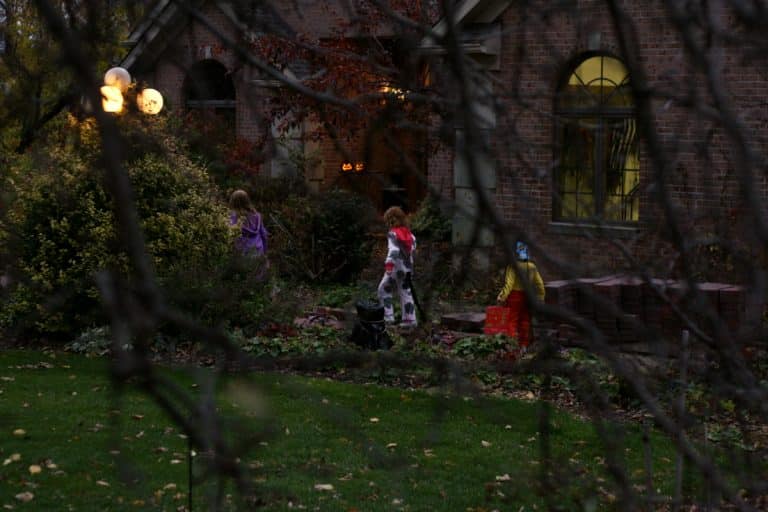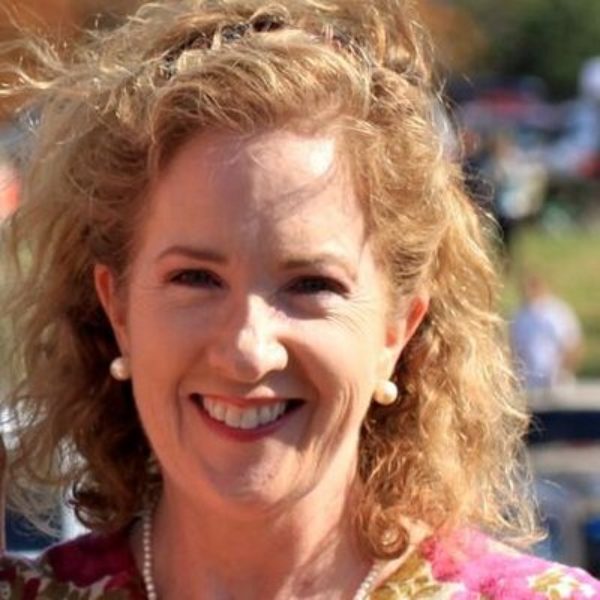
Image by Susy Morris/Flickr, Attribution-NonCommercial.
Facing Our Darkness on Halloween Night
Like most people, since I was a child, Halloween brings a heady rush of excitement that definitely goes beyond costumes, jack-o-lanterns, and even trick-or-treating for good chocolate.
Year after year, exhilaration sets in as children and parents begin their animated zig-zagging through neighborhoods in the deep dark of night, dressed as something or someone they aren’t really, knocking on the doors of perfect strangers, coming face-to-face with the unknown and unseen.
Now, I am aware that some parents and a number of churches are less than enthusiastic about the traditions of this liminal night, and are going so far as to pull their children out of Halloween activities entirely, or are offering “Godly” alternatives. (Heard yet about “Jesus Ween”?)
While some people’s claims that Halloween should be assailed as inherently “evil” or “of the devil” and not consistent with Christian values are questionable — both theologically and historically — the real regret here is the opportunity that is lost by missing the point of Halloween.
In pre-Christian, Christian, and now post-Christian times, October 31st has traditionally been a night to name and face our fears, a time to face “the dark” — the dark outside of us, and the dark inside of us.
When we give our children the freedom to take those first steps out into the dark of Halloween night, we are allowing them to learn, first-hand, that the foreboding darkness that will envelop them will not, in fact, consume them.
They learn on their own that, even if they wear a mask of something they think is really scary, they don’t actually become that scary thing. In the act of putting on the mask, the scary thing loses much of its power, and the child’s own sense of inner power, inner light, and identity is affirmed.
As Halloween comes and goes each year, children slowly and safely wander farther from home, becoming more secure in their growing knowledge that what looks (at first) like something deep, dark, and foreboding can also be full of surprise, delight, and even joy.
The subliminal messages here are positive and healthy ones for our children and for our planet. The world around us, even the world inside each one of us, is neither all evil nor all good, neither all light nor all dark. There is always more than meets the eye.
So, parents banning Halloween night? There is real irony here. Parents forbidding their children (and themselves) this chance to face their fears, telling them instead that they cannot dress up, they cannot go outside in the dark, they cannot trick-or-treat, may actually be promoting fearful messages — that the world is a terrifying place, no one is safe, and we have no power over the inner and outer demons of our lives.
These are messages that perpetuate the dangerously dualistic, black and white, uncompromising way of seeing the world that is polarizing our society today.
But when we shed some light on the dark complexities of Halloween night, even the simple exchange of trick-or-treating can carry an important subtext: at every open door on Halloween night, children and their parents are enacting the universal (and spiritual) principle of giving — namely, that it is good (indeed it is a sign of our inner humanity) that we can willingly open our doors and give generously to complete strangers, even to those who wear masks, making them unrecognizable and frightening to us. There is always more than meets the eye.
Halloween can be as grace-filled as it is black-dark, a night to discover, year after year, that when we venture out into the darkness of the unknown, the night can be beautiful. Others are kind. Evil is actually a lot like a monster mask, and after an exhilarating few hours of exploring the dark, we can always return to the light of home, safe and sound.
And sometimes with a boatload of pretty darn good chocolate.

Share your reflection